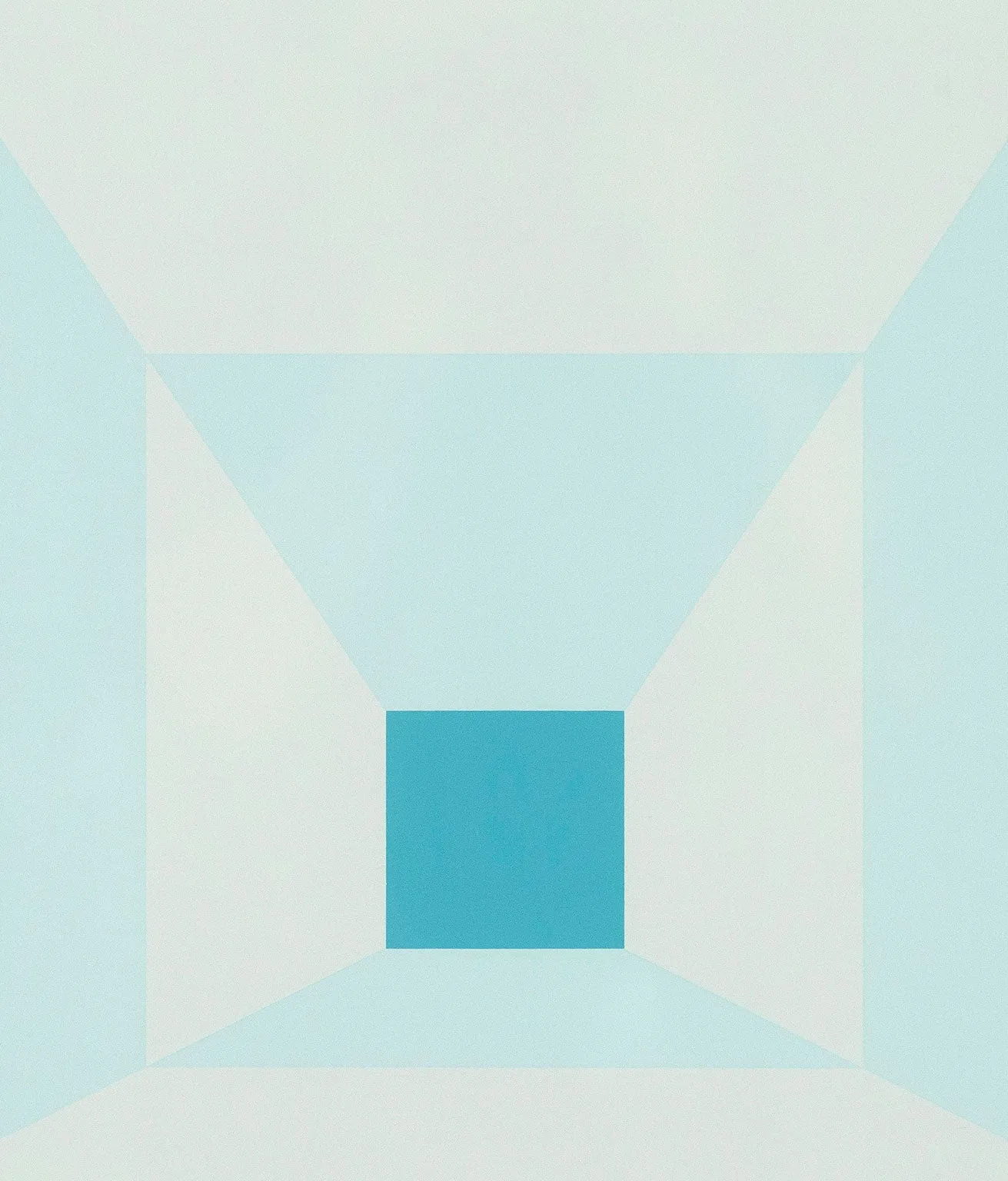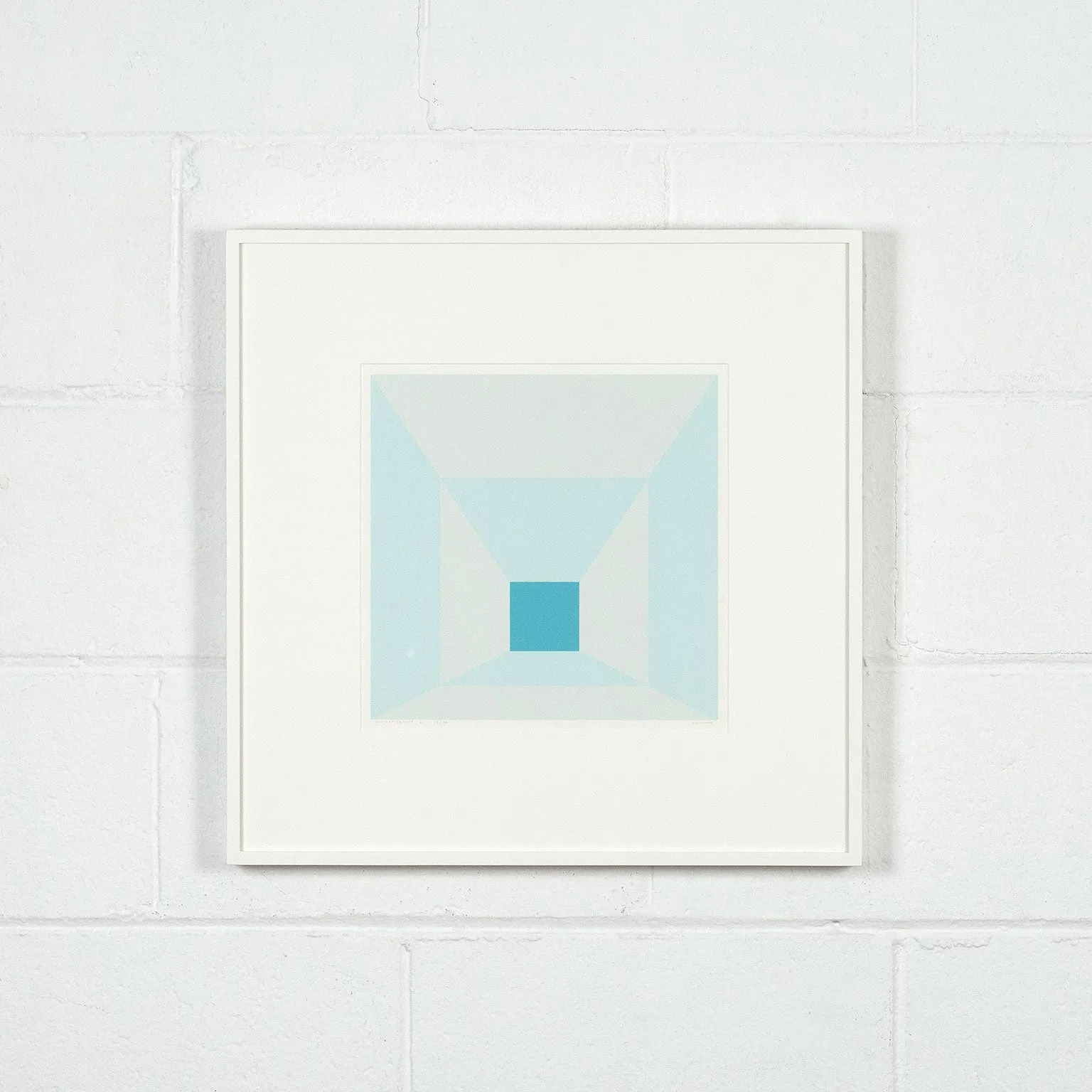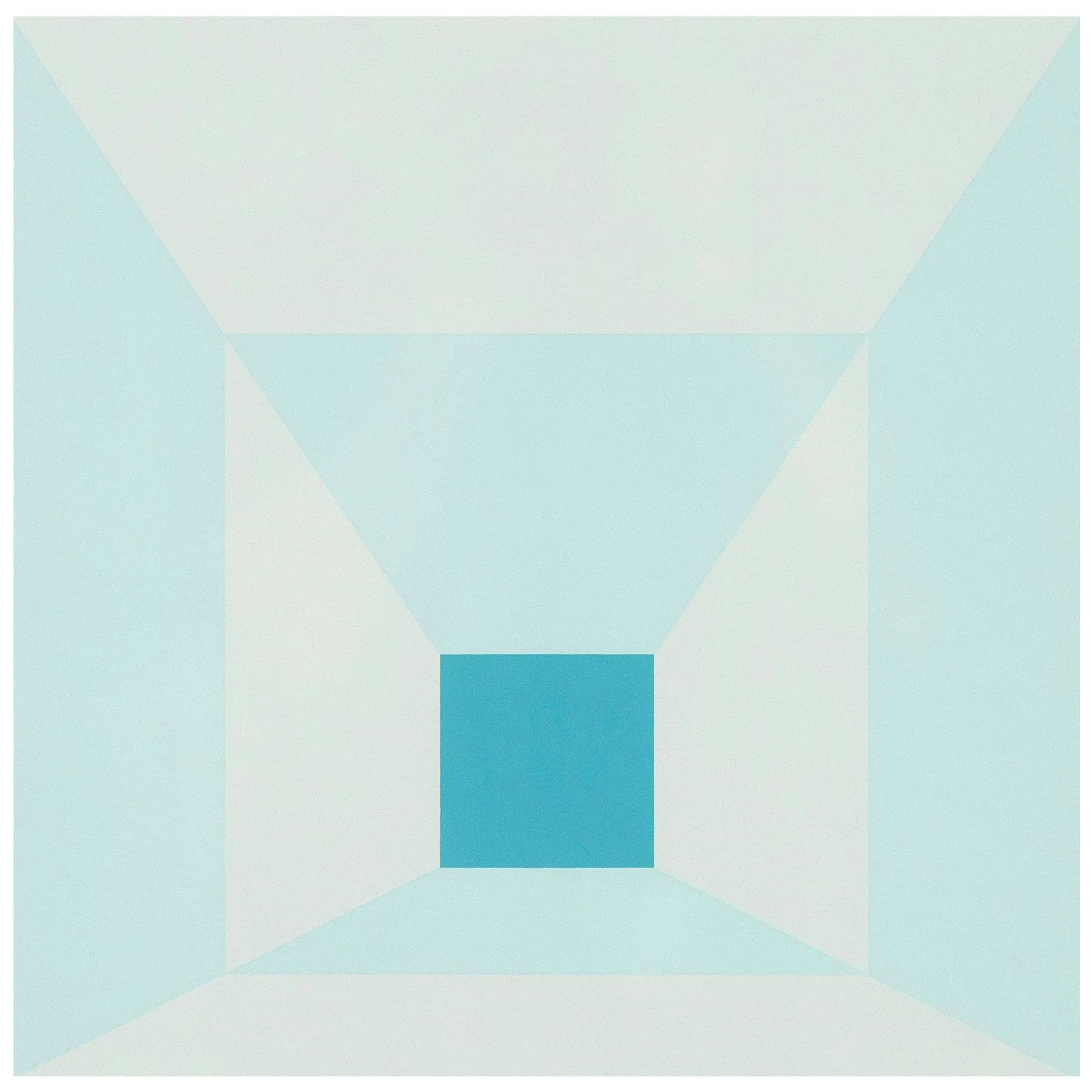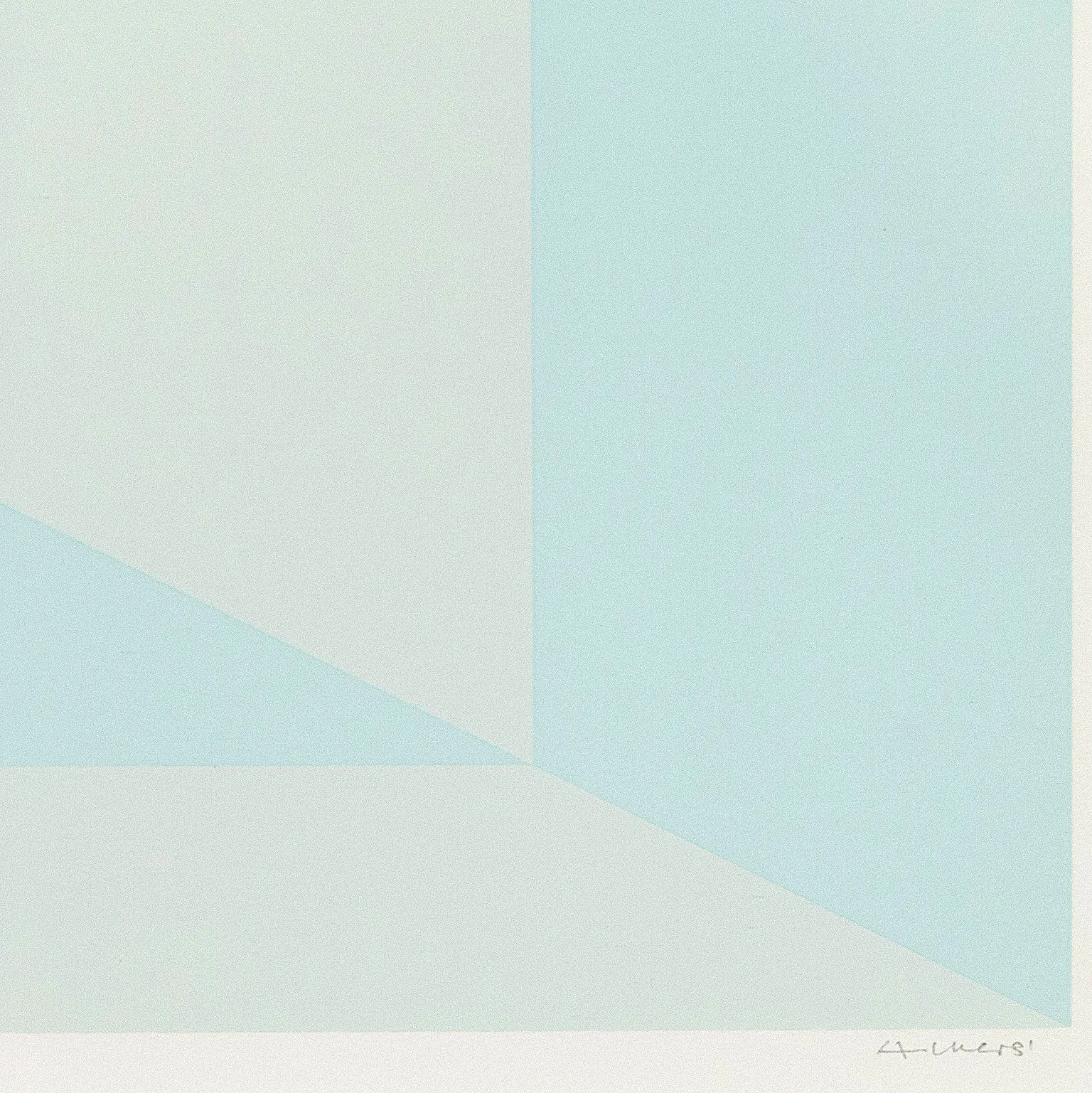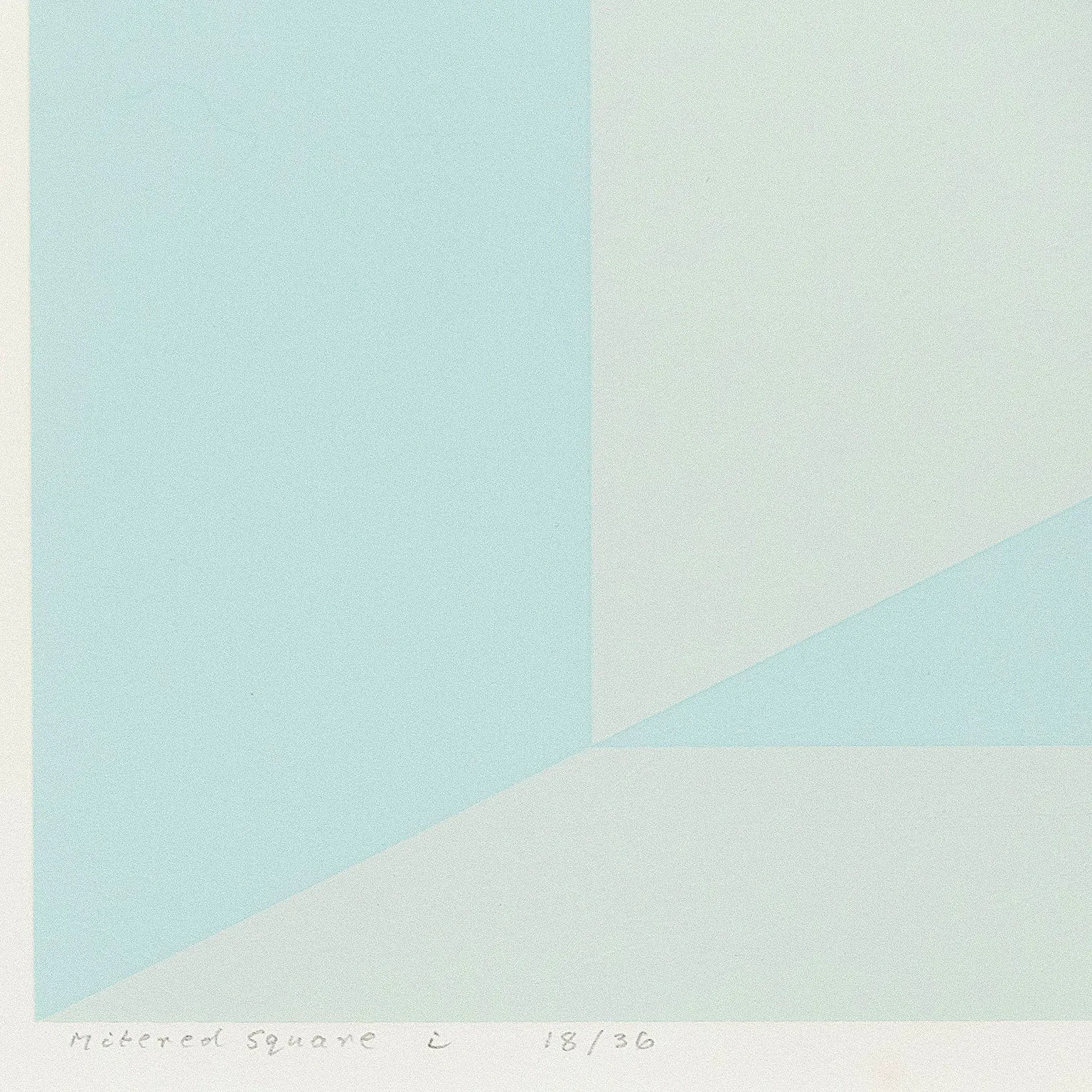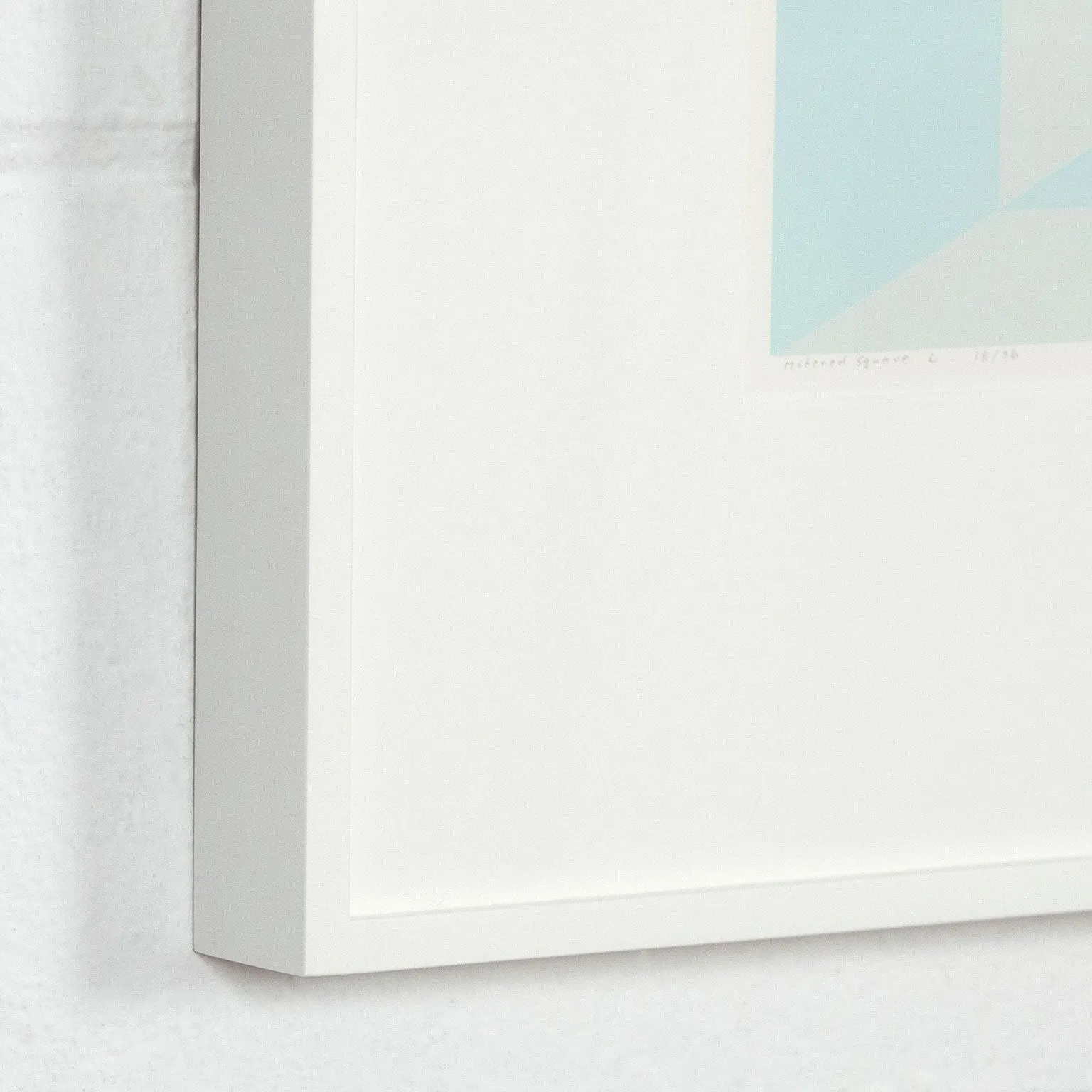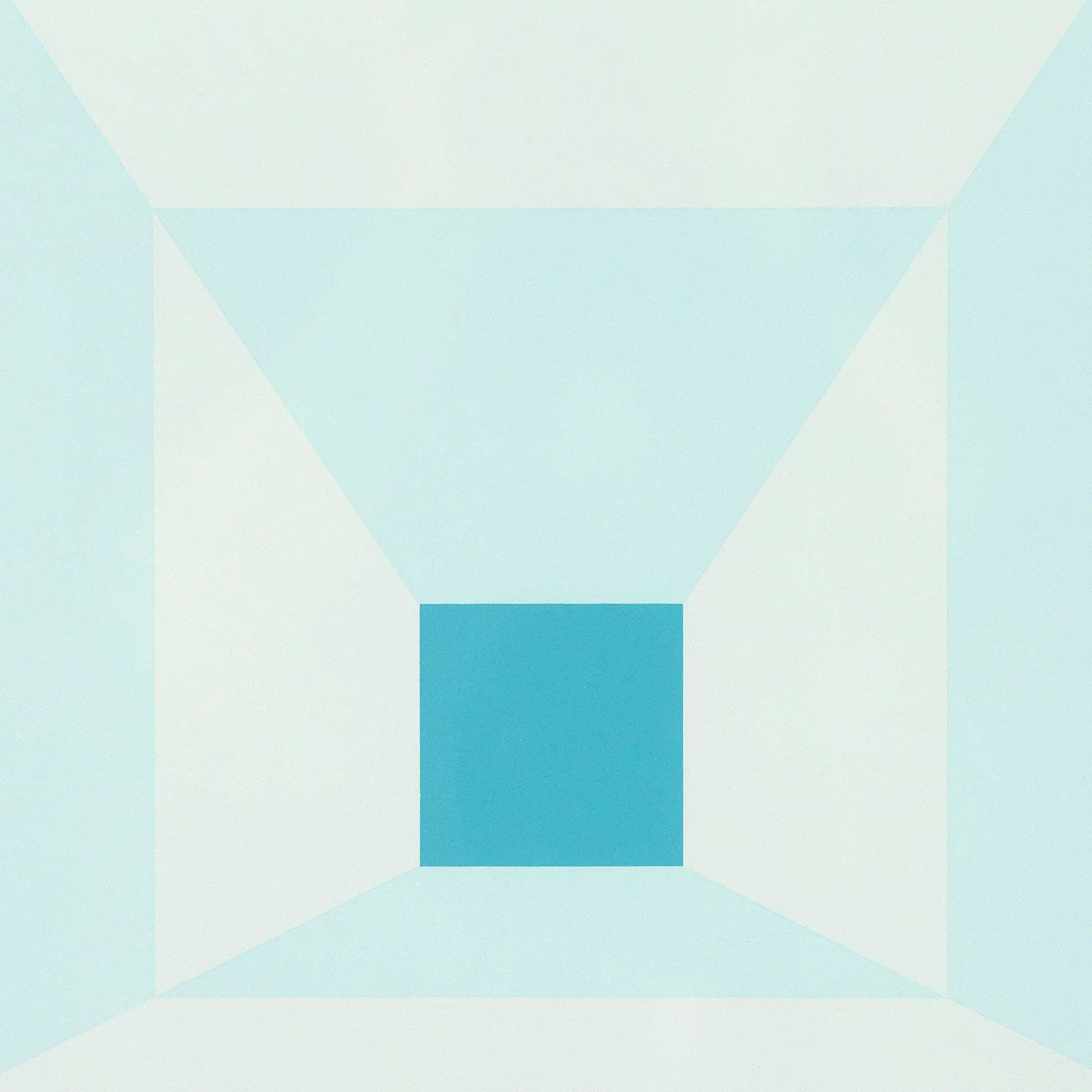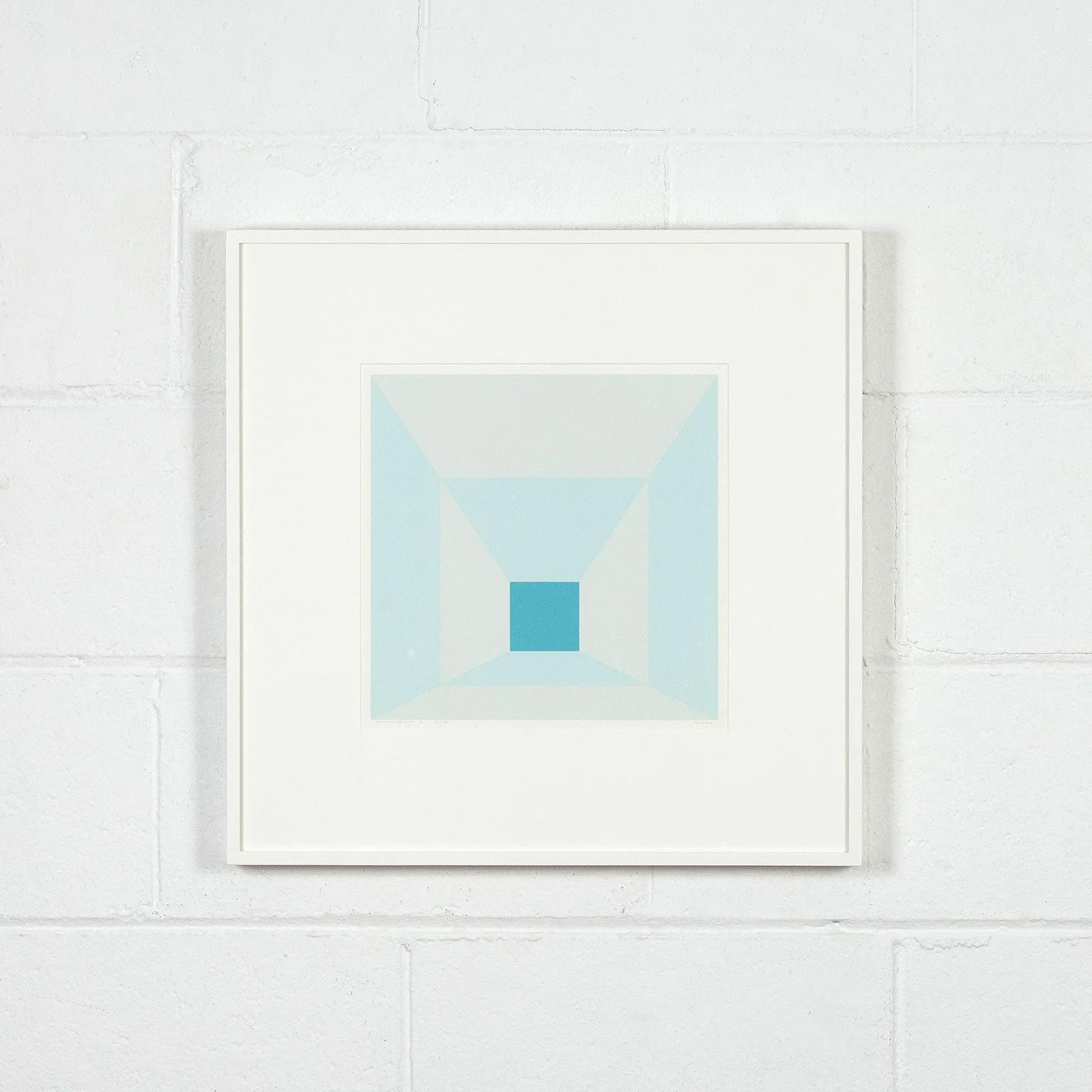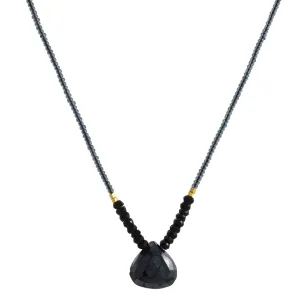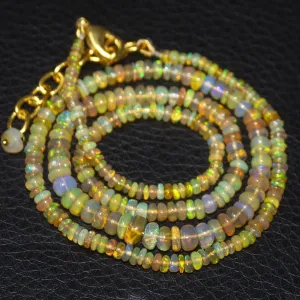In the "Mitered Squares" works, Albers not only explores the relationship of gradient color but how we perceive complex geometric structures.
This screenprint, in an atypically small edition of 36, is a prime example demonstrating that Albers is one of the most important practitioners of minimalism and hard-edge abstraction...and possibly even Op art.
Josef Albers (1888-1976) is affiliated with, or an active participant within numerous movements that have defined visual culture in the 20th century.
Albers was a student and later a professor at the Bauhaus in Germany.
After the prestigious academy was closed by the Nazis, Albers and his wife Anni (a noted textile designer) emigrated to the United States.
While Albers is best known for his series “Homage to the Square”, he was a significant mentor and taught major artists including Robert Rauchenberg, Cy Twombly and Eve Hesse at Black Mountain College and Yale.
Art Historians credit Albers for fusing elements of American and European abstraction while influencing minimalism, hard-edge painting and Op art.
His work is instantly recognizable and collected internationally.
While some of Albers' geometric compositions are straight-forward and simply flat, in "Mitered Squares" we are offered a composition to interpret: Are we looking at a recess, with a dark center at the base, or are we looking at a structure with a darkened small square "roof"?
Albers works can be found in institutions around the world.
It is quite rare to find single works from this important portfolio.
Additional images available on request.
Questions about this piece? or call 1.416.704.1720
Signed and numbered by the artist.
From an edition of 36
Screenprint
USA, 1976
11"H 11"W (square, image)
20.5"H 20.5"W framed
Very good condition.
Note: pictured with "Mahogany" from Mitered Squares

